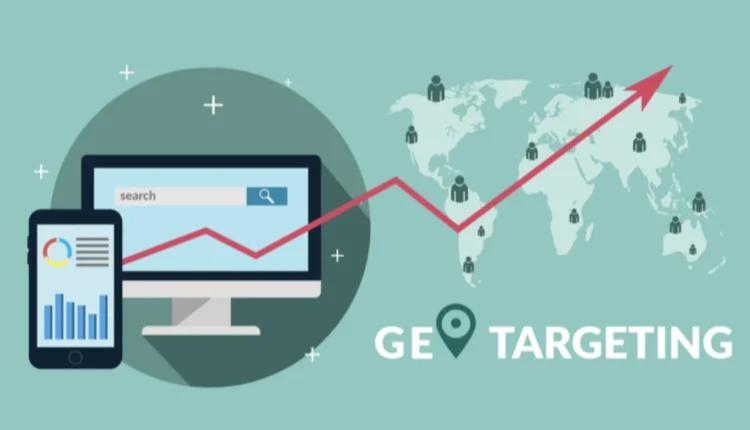In the digital environment of today, advertising can now target with greater accuracy due to geo-targeting capabilities. What if I suggest there exists a method to enhance this even further? Now we talk about hyperlocal advertising strategies, which are the new way to connect with your audience exactly where they live or work. This article will explore what hyperlocal advertising means, its importance, and how companies can use it to enhance their marketing activities.
Understanding Hyperlocal Advertising
To begin with, what do we mean by hyperlocal advertising? It’s like taking geo-targeting to a much more intense level. Geo-targeting lets advertisers customize their ads for people’s locations, but hyperlocal advertising goes more into detail by focusing on very specific areas, sometimes just a few blocks or feet around.
The Power of Precision
Why should one consider hyperlocal advertising when usual geo-targeting appears to be effective? It’s about the accuracy. Hyperlocal ads lets companies send very fitting and prompt messages to people depending on where they are at the moment. It could be used for telling about a quick sale in a close shop or letting customers know of an event that’s happening just nearby, making sure your message gets to the right audience when it matters most.
Hyperlocal Data for Hyperlocal Advertising
For good hyperlocal ad plans, companies must have strong data sources that give information about how consumers act in the area. They need to know things like where people walk around, what local events are happening, the weather situation and also location information from mobile phones as it happens. By using this large amount of data, advertisers can make very specific campaigns that match well with their audience on a very local scale.
Crafting Compelling Hyperlocal Campaigns
Now that we grasp the significance of hyperlocal ads, let us examine some tactics for creating persuasive campaigns.
- Offer deals based on place: Make special discounts or offers for people who are near your business.
- Get updates instantly: Use data that comes right away to send messages when the time is good. For example, special offers related to the weather or reminders for events happening soon.
- Localized Content: Make content that really talks to the people in the area. For instance, showing important places close by or including popular figures from the community.
- Mobile Optimization: Make sure your local-focused advertisements are adjusted well for mobile phones. This is because people usually see these messages while moving around.
- Geofencing: Use geofencing technology to focus on people in a specific area, like near your shop or where a community gathering is happening.
Case Study: The Power of Hyperlocal Advertising
To show how well hyperlocal advertising works, consider a small coffee shop in a crowded center of the city. The coffee shop can use very local advertising strategies to focus on people nearby. Thus, attracting them with a special deal for the coffee they like best. With geofencing technology, the shop is able to send messages directly to those who are close enough to walk there. This helps increase customers coming in and grows sales immediately.
Conclusion

In a time when people get overwhelmed by many adverts from everywhere, hyperlocal advertising provides a new perspective. By concentrating on accuracy and being relevant, companies are able to stand out among the distractions. And further, engage with their customers in a closer way. If you own a small family business or a large international company, using hyperlocal advertising can greatly improve your marketing. So, why delay? Start today and watch your business thrive in the hyperlocal landscape!
Frequently Asked Questions (FAQs)
1. What is hyperlocal advertising, and how does it differ from traditional geo-targeting?
Hyperlocal advertising involves targeting potential customers within a very specific, localized area, often using GPS or IP address data to pinpoint users’ exact locations. This approach differs from traditional geo-targeting, which may target broader geographic regions such as cities or zip codes, by focusing on smaller, more precise areas like neighborhoods or even individual streets.
2. Why is hyperlocal advertising becoming increasingly important for businesses?
Hyperlocal advertising is becoming increasingly important for businesses. This is because it allows them to reach customers at the most opportune moments. For example, when they are in close proximity to a physical store or searching for nearby products or services. By delivering highly relevant and timely messages to consumers based on their location, businesses can increase engagement, foot traffic, and conversions.
3. What are some examples of hyperlocal ad tactics?
Examples of hyperlocal advertising tactics include targeting users with location-based mobile ads when they are near a physical store, using geofencing to send push notifications or special offers to users within a defined radius, and incorporating location-specific keywords and content in online ads to improve relevance and visibility in local search results.
4. How can businesses leverage data to supercharge their hyperlocal advertising efforts?
Businesses can leverage data to supercharge their hyperlocal advertising efforts by first analyzing customer data to understand their target audience’s behavior, preferences, and location patterns. This information can then be used to identify relevant geographic areas for targeting and personalize ad content and offers based on local context. Additionally, monitoring and analyzing campaign performance data allows businesses to optimize their hyperlocal advertising strategies over time for maximum effectiveness.


